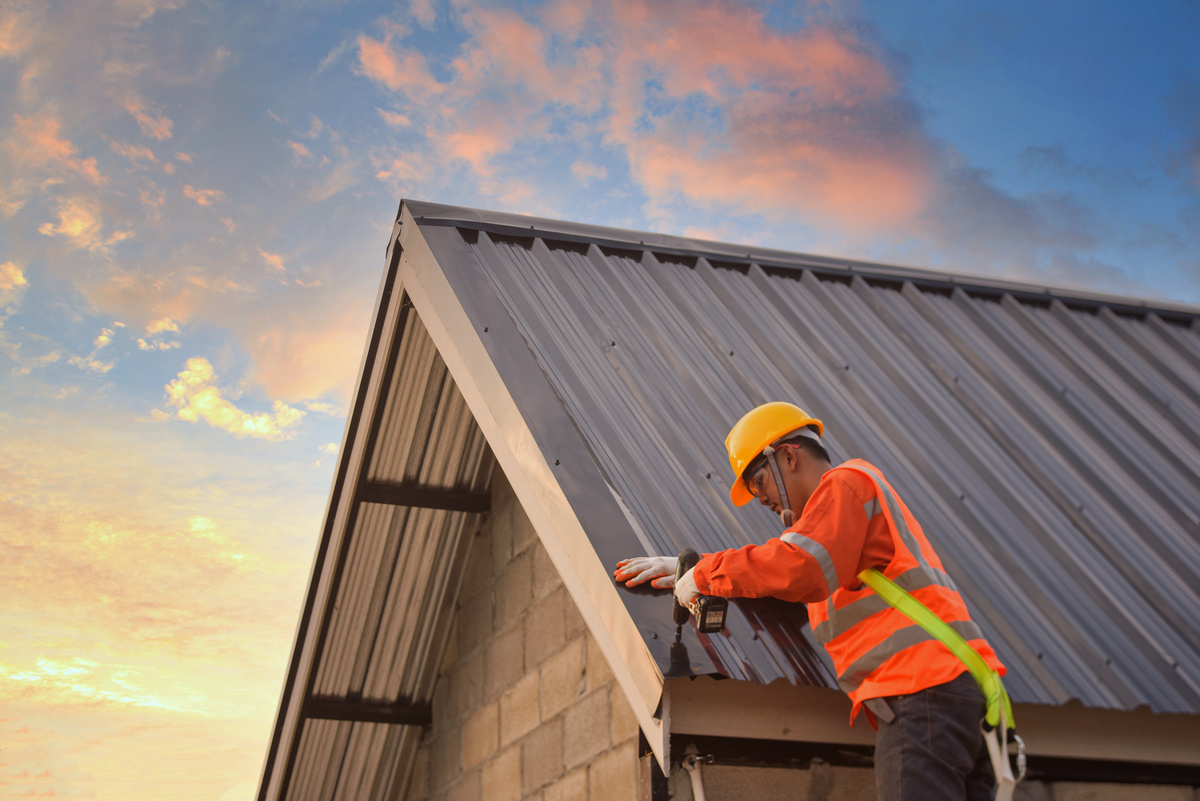Roofing 101: Types of Standing Seam Metal Clips

Owning a building is a long-term investment. Homeowners and business owners alike need their homes and facilities to be built to last, which is why many are choosing a metal roof versus a traditional asphalt shingle roof. Like any major construction project, building a metal roof requires the utmost care, from hiring reputable contractors to using the proper equipment.
In order to ensure the best possible result, quality materials must be used throughout each step of the process. This includes the use of standing seam metal clips, which are a crucial component to executing a secure and successful roof installation.
Learn about the different types of standing seam metal roof clips, how they work, and how to select the right clips for your roof.
What Are Standing Seam Metal Roof Clips and How Do They Work?
Installing a metal roof is a more complex process than a classic shingle roof. Modern metal roofing requires a range of materials to ensure it stays put and lasts through years of wear and tear.
Standing seam metal roof clips are small but critical hardware for securing the metal panels, bearing plates, and gutter hangars. They act as the anchor between the roof panels and the structure, helping to:
- Secure panels in place under various loads
- Prevent metal-on-metal deterioration
- Mitigate costly leaks
- Accommodate expansion and contraction of panels due to temperature changes
Also referred to as cleats, the overall quality and life expectancy of a metal roof is largely dependent on the clips and materials used.
Climate Resilience and Extreme Weather Considerations
While thermal expansion and contraction have always been factors in roof system design, today’s climate demands even greater performance from metal roof clips. With more frequent extreme temperature swings, clip selection must account for:
- Enhanced thermal movement – Clips must allow for panel movement without distorting seams or compromising weather tightness.
- High wind uplift resistance – Particularly in coastal or hurricane-prone regions, clips should meet or exceed local building codes for wind resistance.
- Impact resilience – Stronger materials, such as stainless steel, may be needed to withstand hailstorms and debris impact.
- Freeze-thaw cycles – In regions where temperatures shift rapidly between freezing and thawing, expansion clips can reduce stress on fasteners and seams, minimizing long-term damage.
Choosing the right clip type for the local climate can significantly extend the lifespan and performance of a standing seam metal roof.
How to Select the Right Clip for the Job
The right clip depends on multiple factors beyond just roof type. Consider:
- Panel Profile Variations – Snap-lock, mechanically seamed, and trapezoidal profiles have different leg shapes and engagement points that affect clip compatibility.
- Roof Slope – Steeper slopes may require clips with higher holding power or different attachment angles.
- Substrate Material – Plywood, metal decking, or insulated panels may require different fastener types and clip designs.
- Panel Length – Long runs typically demand expansion clips to accommodate more thermal movement.
- Climate and Code Requirements – Consider regional wind uplift standards, snow load requirements, and thermal movement tolerances.
- Project Budget and Longevity Goals – While fixed clips are more affordable, expansion clips and higher-grade materials often provide better long-term performance in challenging environments.
What Kinds of Metal Roof Clips Are Available?
AMSI offers a wide range of clips and accessories to fit virtually any roof panel, from snap-lock to mechanically seamed.
Bermuda Clips – For horizontal bermuda panels, concealed after installation for aesthetics and corrosion protection.
Fixed Clips – Attach to the male leg of a panel, fixed to the deck. Suitable for snap-lock and short mechanical runs.
Expansion Clips – Allow for thermal movement; essential for long panel runs and extreme temperature environments.
Bearing Plates – Distribute load evenly across the structure; ideal for use with UL snap-lock clips.
Gutter Hangars – Secure gutters to the roof system, available in galvanized or aluminum finishes for strength and corrosion resistance.
Installation Best Practices and Common Mistakes
Selecting the right clip is only part of the equation; how you install them matters just as much.
Best Practices:
- Follow manufacturer spacing guidelines based on panel type, slope, and expected loads.
- Install in a consistent sequence from one end of the panel run to the other to maintain alignment.
- Check fastener torque to avoid under- or over-tightening, which can cause movement issues.
- Verify alignment frequently during installation to prevent clip shift.
- Using the right specialized tools can make every step of installation more efficient and precise, see our list of Must-Have Standing Seam Roofing Tools for 2025 to ensure your crew is fully equipped.
Common Mistakes to Avoid:
- Using the wrong clip type for the panel profile
- Ignoring thermal movement needs on long panel runs
- Over-tightening fasteners, restricting panel movement
- Skipping expansion clips in climates with high temperature fluctuations
Troubleshooting Tips:
- If panels appear buckled, inspect for restricted movement due to fastener over-tightening.
- For leaks at seams, verify that clip placement and panel engagement are correct.
- Replace any corroded clips promptly to prevent system failure.
Why Are Metal Roof Clips Important?
Using the best metal roof clips for your project is essential to the longevity, performance, and appearance of your roof. The right clip:
- Enhances appearance by keeping seams tight and uniform
- Protects against the elements, from rain and snow to high winds and hail
- Manages thermal expansion and contraction without damaging the roof system
With proper clip selection and installation, a standing seam metal roof can last up to 50 years or more.
You can trust AMSI Supply to deliver customized clips in Galvanized, 304 Stainless Steel, Galvalume, and Aluminum to meet your needs and specifications. Browse our selection or contact us for a project quote.